Warning: this is going to be a long post. Tasmania is worth all these words and more, but we tried to give each section somewhat leading titles to help you easily find the stuff you like most :)
Catching up in Hobart
We started our journey to Tasmania with a (very) early morning plane ride from Christchurch. After settling in to our Airbnb, we could feel adventure pulling at us to get out and explore our new surroundings, but despite our best efforts the 4 AM wakeup eventually got to us.
Fortunately, we pulled ourselves together just in time for a quick trip up Mount Wellington, the tallest peak near Hobart. The bird's-eye view, while gorgeous, only served to make us more guilty about the beautiful city we were missing below.
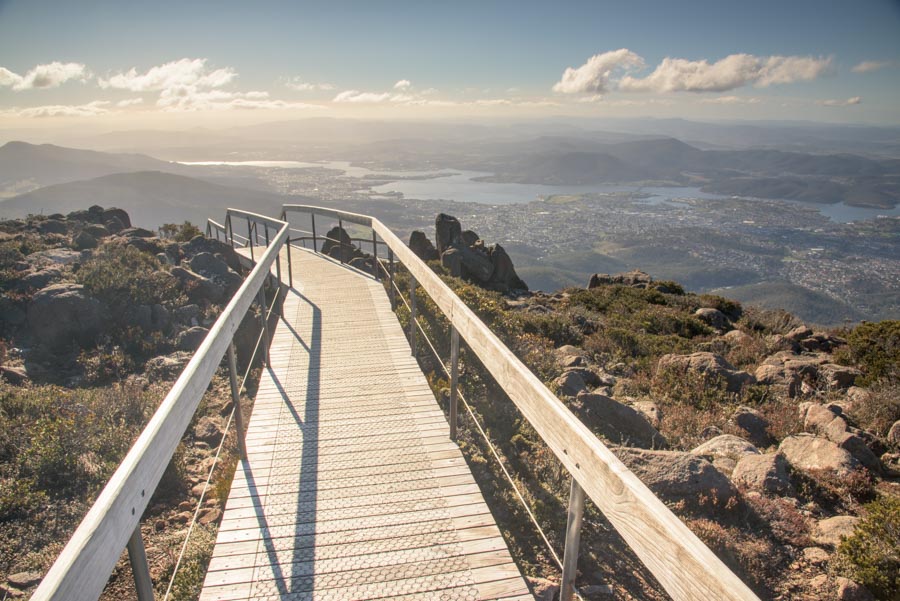
We woke up a little bit earlier the next day and headed to Salamanca Place for the Saturday market. Amid the adorable rows of English colonial homes, you can taste what we've found to be pretty much the essence of Australasian food: excellent produce, inventive Asian fusion, and an unabashed sweet tooth.
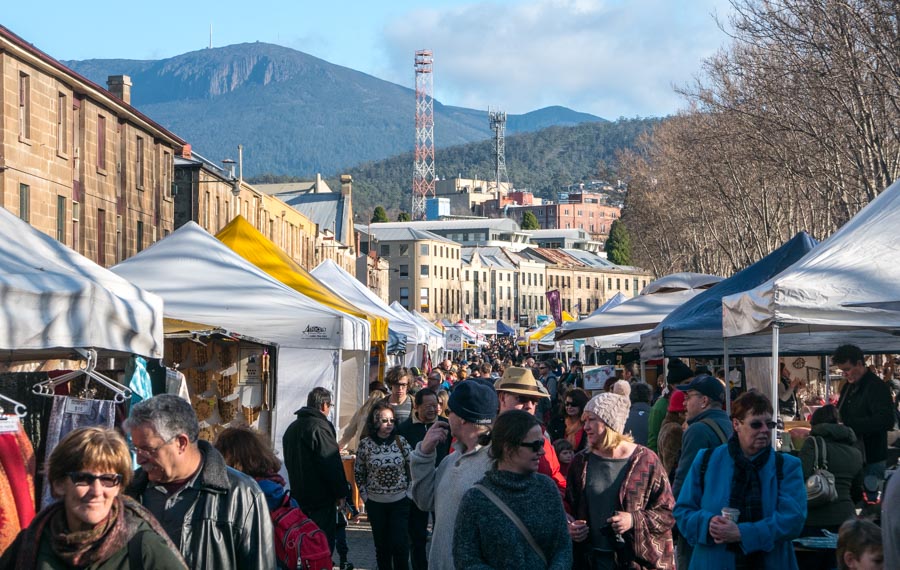
Having been fairly undisciplined in Hobart so far, we picked up some goodies to chomp on immediately and some for the road, then bundled off to the penal colony ruins at Port Arthur to set ourselves on the path to redemption.

East Coast encounters
We continued on up the East Coast, spending our first night on the road near Freycinet National Park. This beautiful peninsula sports some gorgeous beaches, so we hiked the steep trail to one of these, Wine Glass Bay.

Further north, we stopped in the tiny town of St. Helens to visit the Bay of Fires. The rocks along this incredible stretch of coastline have some fiery-looking lichen, but the bay actually got its name from the cooking fires of the Aboriginal people who once lived here.
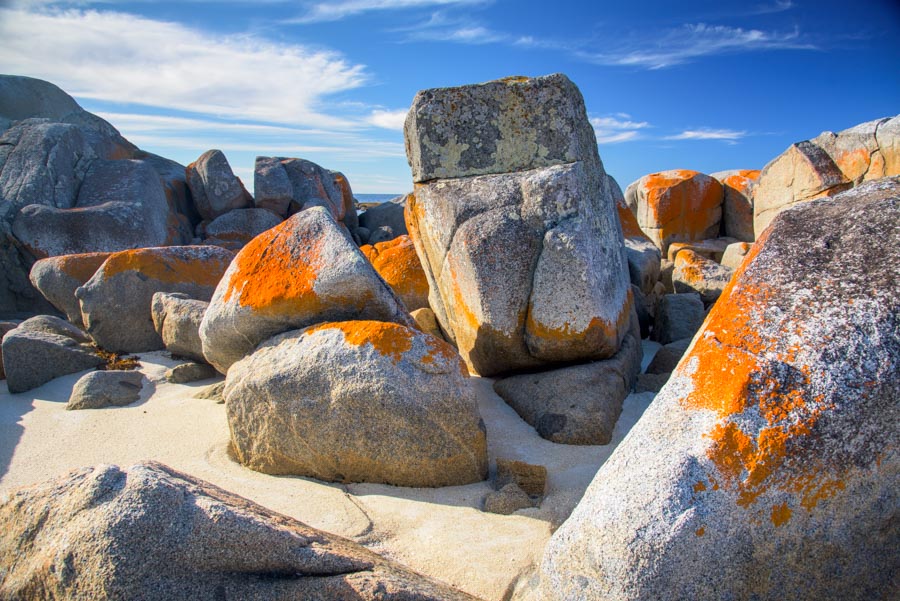
We were all set for an early morning of exploring the rocks, but first, our Airbnb hostess tipped us off about an opportunity we couldn't pass up. Turns out, she and her boyfriend are also wildlife caretakers, meaning that whenever orphaned or injured animals need a home to recover in they opens their doors.
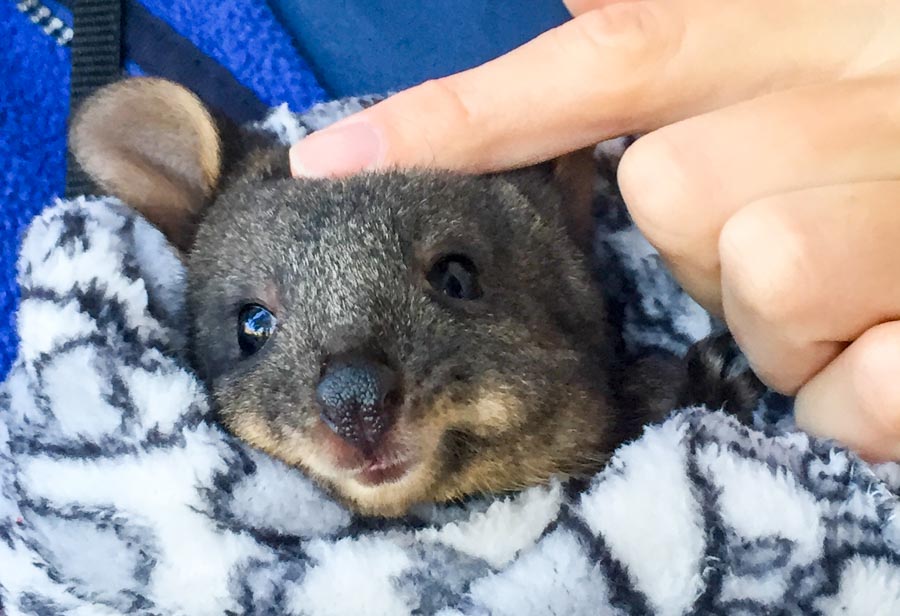
And as luck would have it, they'd received a pademelon (like a small, more snouty wallaby) joey the night before. Thankfully, they were also fine with letting two complete strangers come into their house to hang out with the tiny creature. While there, we also met Jack, the sulphur-crested cockatoo, who loves the ladies and knows a couple of tricks and words to impress.

Sipping our way through Tassie
Next, we snaked our way through Tasmania's most famed wine region, the Tamar Valley, for a taste (or several) of all it had to offer.
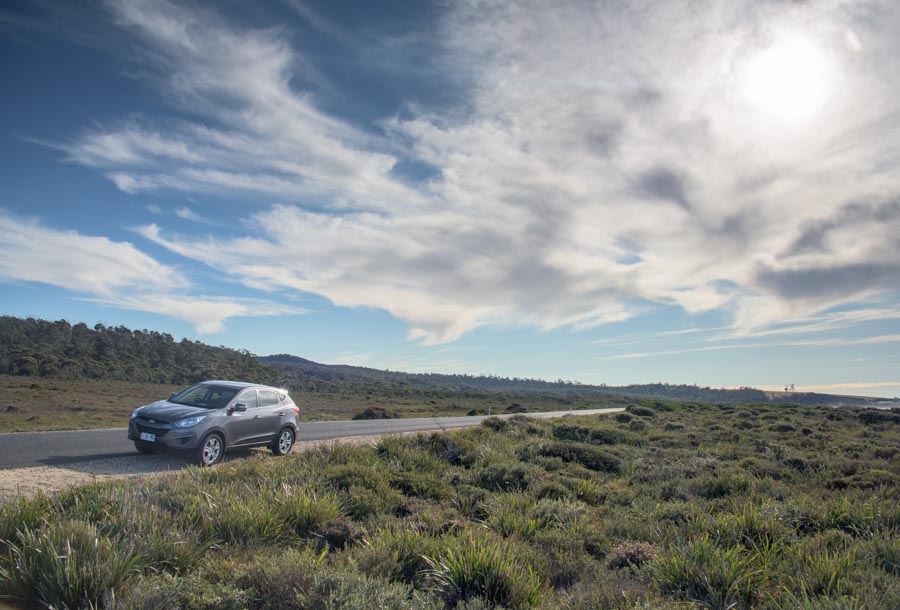
Silky Pinot Noir and sparkling wine made in the methode traditionelle are what put Tasmania on the map, and while those might be two of our favorite things on earth, we tried to keep a level head while taking notes.
Some of our favorites from the Tamar Valley and beyond:
- Piper Brook. One of our very favorite sparkling wines from the trip, the 2008 Piper Brook Sparkling has a gorgeous label as refined as its taste, evocative of English landscapes in lithograph. It's got a bit of yeasty funk for interest yet remains well-balanced, with a finish of Manuka honey notes. For a dryer, more delicate sparkling, the 2006 Kreglinger Brut is an excellently crisp vintage. We were also lucky enough to sample the smooth 2006 Pipers Brook Pinot Noir 'The Lyre', which we'd recommend for those looking to splurge a bit on a classic, fruit-forward Pinot Noir.
- Josef Chromy. The 2009 Josef Chromy Sparkling impresses with its notes of honey and apple and a toasty, nutty characteristic on the finish. Moving down the tasting list, the 2014 Josef Chromy Pinot Noir's white pepper nose leaves you pleasantly surprised by its silky, dark chocolate finish, and the Non-Vintage Josef Chromy Ruby Pinot is a sweet fortified red that's a cashmere blanket on a cold evening.
- Freycinet. Freycinet's flagship Pinot Noir has previously taken home the title of best Australian Pinot Noir, and it's not hard to see why. Dark cherry and spice aromas accompany ripe, elegant tannins to create an excellent depth and richness. We also enjoyed their lovely, caramel-apple-scented Botrytis, which is also bottled under the Freycinet label. All are offered in an incredibly laid-back and welcoming tasting room, with stories of local runaway sheep and farm knick-knacks gracing its walls.
- Moorilla. Moorilla is part art gallery, part science project, all delicious. While we tried some very bold vintages across the board, our favorites were under the 'Muse' label, with the crisp and sunny Sauvignon Blanc, sumptuous Pinot Noir, and formidable Cabernet Sauvignon/Cabernet Franc Blend as standouts. And what's more, Moorilla is also a brewery! We loved the aromatic Belgo Belgian-style and the hoppy Moorilla Pale Ale.
- Stefano Lubiana. We were blown away by the award-winning Estate Chardonnay, with rich but refined hazelnut notes. On the red side, we loved the deep plum and spice flavors of the Estate Pinot Noir, and its lighter, easy-drinking counterpart in the Primavera Pinot Noir.
Cradle Country
After all this luxuriating, it was off to Cradle Mountain National Park to take in some sweeping views and work up a sweat.
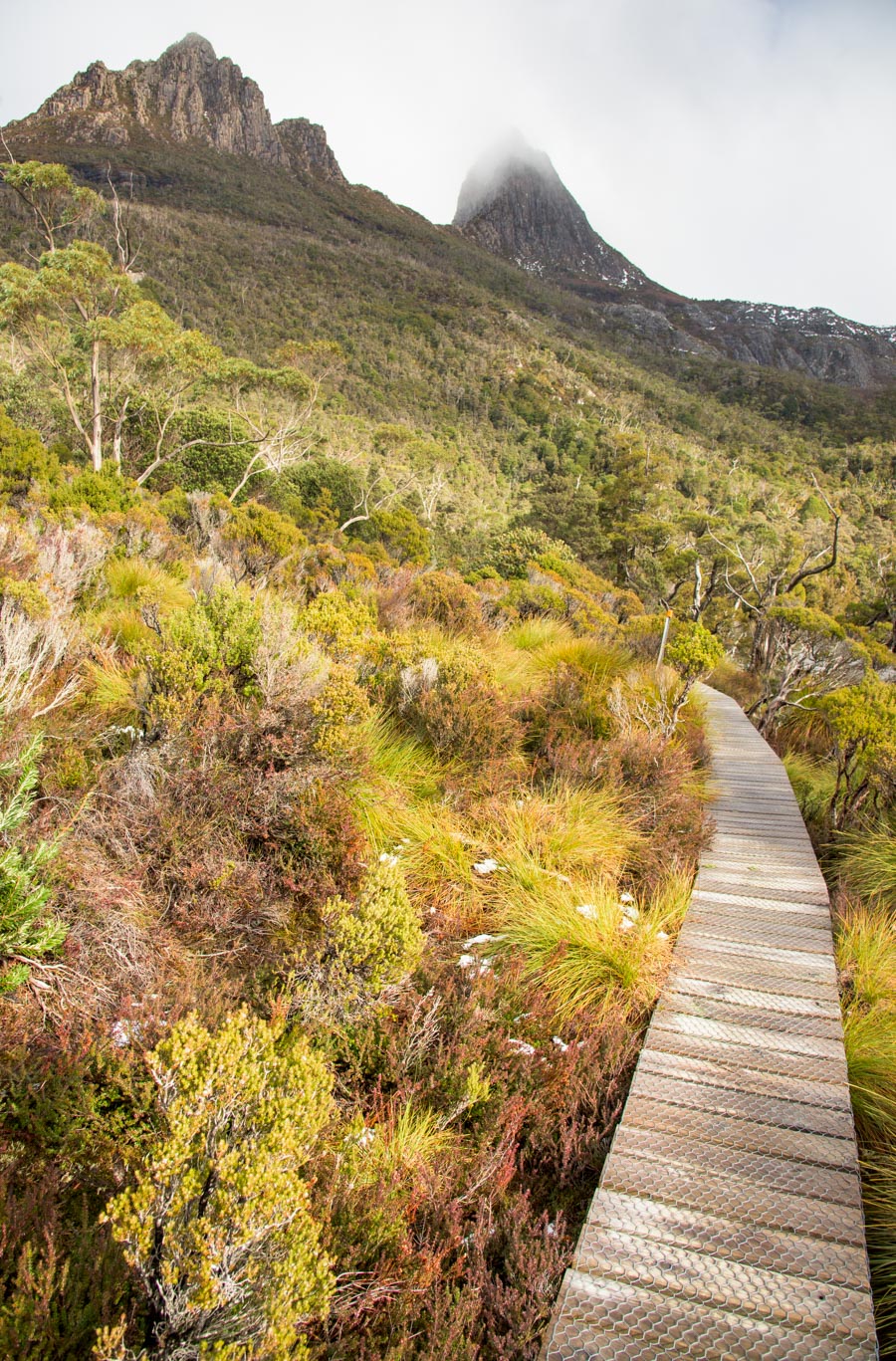
We set off on the Dove Lake circuit, a 2 hour loop at the foot of Cradle Mountain. Whenever the clouds parted, the impressive views of the craggy mountain above and sparkling waterfalls all around dazzled us.

Our day with the Devil
Of course, any account of Tasmania would be incomplete without mention of the incredible Tasmanian Devil.
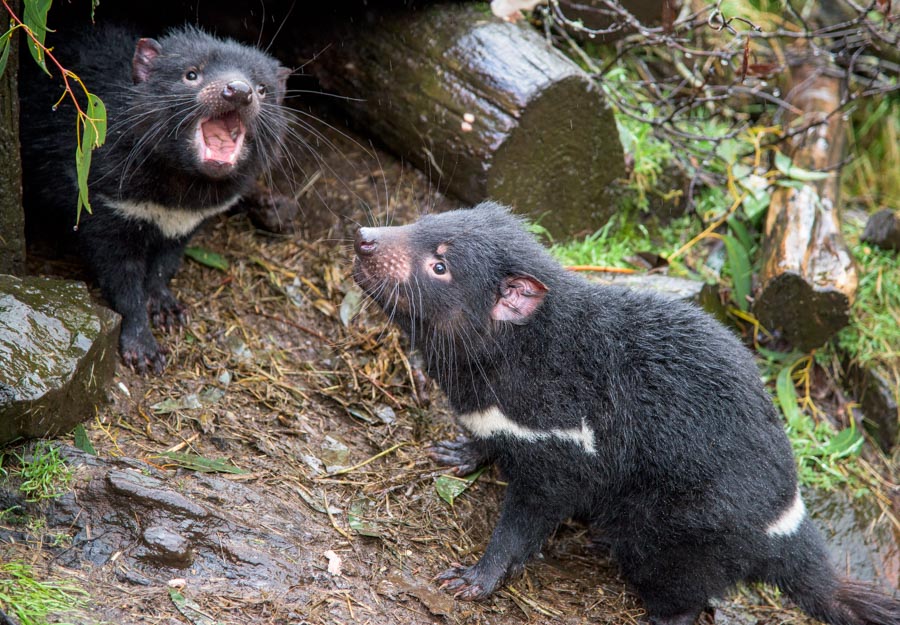
We stopped by a reserve near Cradle Mountain to pay a visit to these delightfully snarly, hopelessly greedy little friends, and we were not disappointed.
We even got to give them a quick pat while they "pouched up", tucking their head protectively in the ranger's arms.
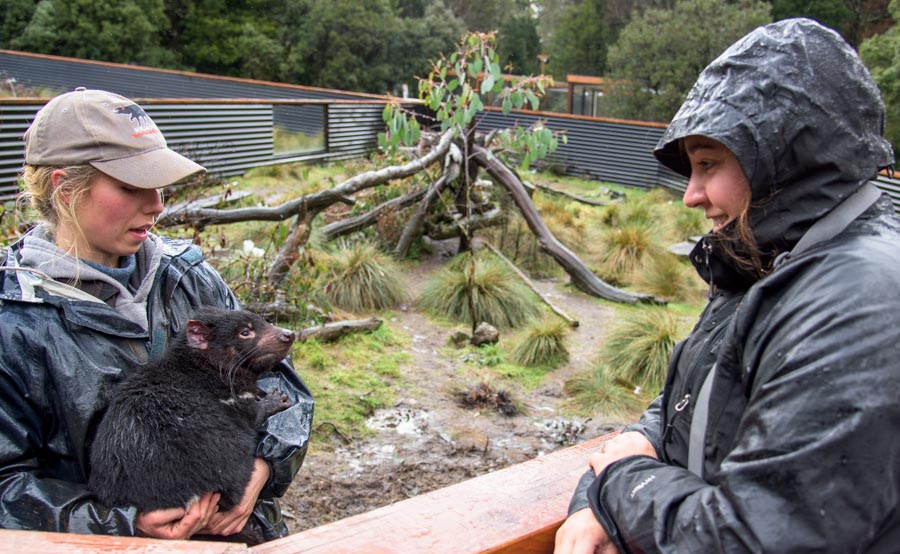
These devils are being bred in an effort to build a captive population 'Plan B' in the event that devils go extinct in the wild???a sad possibility that seems more and more likely all the time. Roughly 85% of wild Tasmanian devils have been killed in the last 20 years due to devil facial tumor disease, a contagious cancer (yes, you read that correctly) that the devils transmit to each other through bites. We're crossing our fingers for a cure, as the world wouldn't be the same without these wonderful, beloved little marsupials.
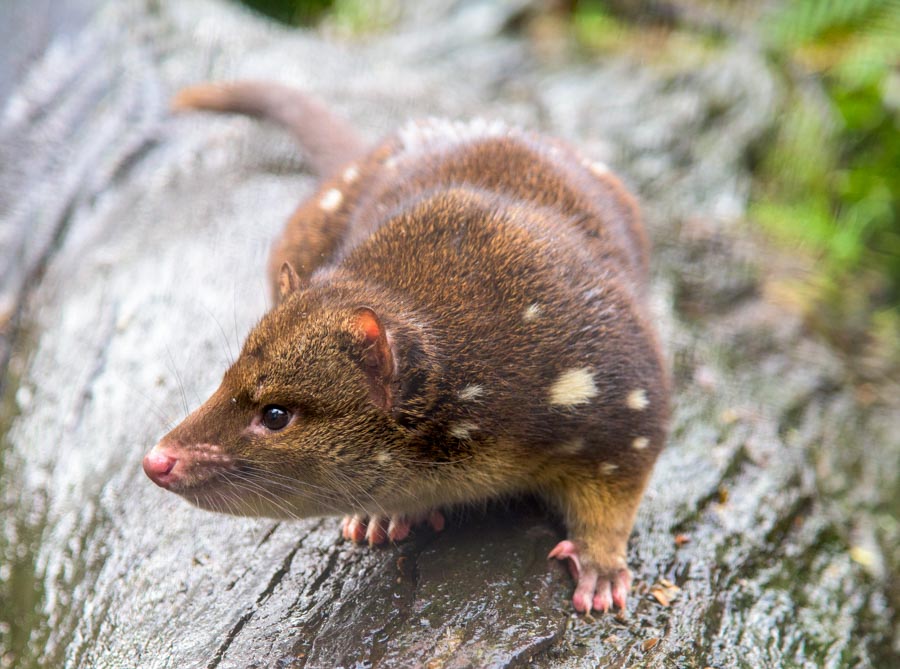
Up Next:
We're off to the mainland! First stop: Melbourne.